The SBC Survived the Liberalism of the 20th Century. Will It Survive in the 21st? That's Up to Us.
In their 2005 book The Churching of America, 1776-2005: Winners and Losers in Our Religious Economy, sociologists Roger Finke and Rodney Stark explore which Christian denominations thrived (and which didn’t) throughout the history of the United States and why.

Of particular interest to me (and I assume to you as well), Finke and Stark identify several distinct strengths of the Southern Baptist Convention. While not evangelicals, the two men argue persuasively something that many of us who are evangelicals have observed for years:
The Christian denominations and churches that attempt to decrease tension with the surrounding culture and adopt elitist, worldly values and commitments tend to die out. At the same time, those that retain their conservative religious principles and maintain high standards for their members survive and indeed grow.
Specifically, Finke and Stark give five reasons why the Southern Baptists were able to resist the 19th- and 20th-century secularization that the Northern Baptists did not.
1) The regional context of the Southern Baptists.
Finke and Stark note that “The Civil War left the Southern Baptists representing an impoverished and shattered South. The Baptists seized this as an opportunity to become the primary organizational vehicle for sustaining a recusant Southern culture that clung to ‘traditional’ views in political, racial, and social as well as religious spheres. Thus through the decades when the South remained an economically depressed internal colony and Southerners were the object of Yankee scorn, the sectlike qualities of the Southern Baptists were reinforced.”
We’ve all seen, whether in literature, film, or in real-life examples of friends or family, the phenomenon of the “big city” transforming a small-town kid, or perhaps the urban elites attempting to corrupt a small town itself. It’s a trope in our stories because it’s so often true: Urbanization and the massive corporate industry it brings with it are frequently a threat to cultures and values that smaller communities wish to preserve.
What Finke and Starke see is that, mainly because post-Civil War urbanization did not devour all of the pre-existing cultures in the south, the Southern Baptist Convention was able to coalesce many people within those smaller communities and give them a way to gather, sustain what they cared about, and pass it along to the next generation.
The SBC thrived in small towns comprised of ordinary people (or, as Jerry Vines would call them, “Billy Baptists”), which helped maintain their biblical values and priorities.
2) Southern Baptist congregations were democratic, placing ecclesiastical authority in all members.
“The local laity hired and fired their preachers as they pleased and did not submit to any directives, theological or otherwise, from above. Local congregations retained the right to ordain ministers and voted annually on ‘whether to retain the pastor’s services'” (Finke and Stark).
Where other, more hierarchical denominations and organizations (such as the United Methodist Church or the Episcopal Church) could hold an increasingly liberal theological sway over individual churches whose membership was largely conservative, the Southern Baptist way of installing ecclesiastical authority in the membership preserved evangelical theology in SBC churches.
A Southern Baptist church made up of men and women who believe homosexuality is sinful, patriotism is good, and Darwinian evolution didn’t happen will not long tolerate a pastor who tells them the LGBTQ issue is “morally complex,” America is “inherently and irredeemably racist,” and the early chapters of Genesis are “figurative.”
And because Southern Baptists invested the rights of self-governance in the members of their churches, those evangelical members were able to dismiss theologically liberal pastors. The democratic nature of Southern Baptist governance worked as an immune system response against theological liberalism infecting seminaries.
3) The independence of Southern Baptist churches.
“The extreme version of this view was promoted by the powerful and well-organized Landmark Movement. Holding to the sovereignty of the local church, they did battle with any denominational organization that attempted to usurp local church authority, from missionary associations to seminaries…Even substantial majorities in the Southern Baptist convention could not expel their opponents in the way that the Methodists expelled Benjamin Roberts and his Free Methodists or, later, the Holiness supporters. Dissidents were thus free to stay and fight for support from among rank-and-file Baptists” (Finke and Stark).
Just as Southern Baptist church members had real authority within their local churches, the local churches themselves retained the right of self-governance. As such, they could not merely be “overruled” by bad actors elsewhere in the denomination. I’m not surprised that the Conservative Resurgence happened within the SBC; the very nature of local church autonomy that the SBC upholds makes such the defense and recovery of our doctrine and practice against elite-led liberalization possible. Conservatives can’t be as easily tossed aside or denied influence as they can be in more hierarchical denominations.
The autonomy of Southern Baptist churches gives conservative churches and pastors a better chance to fight against those who would try to steer the denomination in a liberal direction.
4) The Southern Baptists retained denominational control of their seminaries, unlike the Northern Baptists.
“Although Southern Baptist seminaries were also prone to ‘modernism,’ this trend was held somewhat in check by the periodic dismissal of outspoken seminary professors. The most obvious was the firing of William H. Whitsitt from the presidency of Southern Seminary in 1899. Historians of American religion routinely refer to this as the Whitsitt Controversy, but it was the views of Whitsitt and his faculty, not the firing, that were controversial. For what was involved was not the martyrdom of a church historian because of his disagreement with rank-and-file Baptists over the historical validity of Landmarkian claims. Rather, what was involved was the takeover of the Southern Baptists’ only seminary by a faculty who unanimously rejected many basic, traditional Christian tenets and who aggressively taught these unorthodox views to their students. That is, a group of religious intellectuals consciously attempted to ‘modernize’ Southern Baptist theology, whether the membership liked it or not. Because the seminaries were never independent organizations, however, the seminary faculty was not able to recreate the denomination in their own image” (Finke and Stark).
While local churches, which, of course, fund denominational activities, projects, and institutions, remain autonomous in line with Baptist convictions, Southern Baptist seminaries are governed by and responsible to the Convention as a whole. SBC churches are autonomous, but SBC seminaries are not. Finke and Stark recognize how this has helped the SBC stay conservative and evangelical while northern Baptist denominations veered into more worldly and liberal territory.
So many heritage American educational institutions that were founded by and for Christians have strayed completely into liberalism and secular humanism. They now teach their student every vain wind of doctrine you’d find in the most secular universities. However, while Southern Baptist seminaries have flaws, they have retained far more of the historic Christian doctrine than the vast majority of their counterparts in other denominations.
Why? Finke and Stark would point out that SBC seminaries are owned by a Convention of churches made up primarily of Bible-believing evangelical Christians who will not abide the theological liberalism of other seminaries.
5) Many Southern Baptist clergy remained bivocational local pastors without seminary education.
“This served to curb secularization and reduced the operating costs of local churches. Generally speaking, throughout the South the Baptist clergy received low salaries, when they received any at all. Consider an example offered by Victor Masters (1916) of a Baptist farmer-preacher in Virginia who served two churches. Every Sunday he walked six miles to preach at one church and then walked five miles to the other. He also held three weeks of revivals yearly, while receiving an annual salary of $13.20. In order to live, this man farmed thirty acres of rented land, but was so poor he had to work part time for a neighbor in exchange for the use of a horse to till his field” (Finke and Stark).
I can speak to this point personally. I’ve served as a bi-vocational SBC pastor, and I did not go to seminary. During my approximately twelve years of SBC ministry, I have worked full-time to support my family, first as a middle school teacher, then as a restaurant manager, and later as a middle manager at an office equipment dealer. And I can say from my own experience that the bi-vocational experience helped me to keep my core conservative evangelical instincts and convictions intact.
I think if I had graduated from seminary at 24 with few other real-world skills or vocational experiences, I would have felt more beholden, for good or bad, to the institutions or leaders that helped me get my first full-time pastorate. However, as God ordained it, by not relying on seminary connections or recommendations to secure a full-time pastorate, but instead working a non-ministry job to support my family while doing ministry as faithfully as I could as a “second job,” I had a real sense of freedom and independence. I felt free to shepherd in accordance with my own conscience, as guided by the Word of God.
In 2020, I had the opportunity to take on what would have been my first full-time pastorate. During the process, it turned out several influential people within the church were upset that I’d said we should not support Black Lives Matter. After meeting with anyone willing to meet with me and explaining why I stood by that statement, I decided it was best not to pursue the opportunity and indeed find a new church home (I’d been attending as a member and had some history with this church). It was sad, but I was, and still am, confident that it was the right decision. And the fact that I had a “regular” full-time job with which to support my wife and children made it easier not to be tempted to budge on my convictions for the sake of the opportunity. As it turned out, I was able to join and do meaningful ministry at a very conservative church nearby, which has, in turn, now sent me as a messenger to the annual convention.
This isn’t to say we shouldn’t have full-time pastors. We should, and I am grateful that I have since been given the privilege of serving in this role. However, it is worth noting that having many bivocational pastors within our Southern Baptist churches has helped us preserve our evangelical doctrine and the Bible-believing atmosphere that remains very much alive in the SBC.
Conclusion
While their observations are now two decades old, Finke and Stark rightly identified the strengths of the Southern Baptist Convention that empowered it to resist the same liberal compromise and catastrophic decline of the Mainlines.
We would do well to take their observations to heart and fight to maintain and bolster these distinctives. While God does not “need,” the SBC, I believe that our nation and the world do. Losing the SBC to new forms of liberalism would be a disaster for our gospel mission, both home and abroad. Southern Baptists of today need to reclaim our rights as the final authority over the direction and doctrine of the SBC by making it a priority to be informed and engaged in denominational life.
And that begins with attending our Annual Meeting, ready to conduct business.
Share This Story

